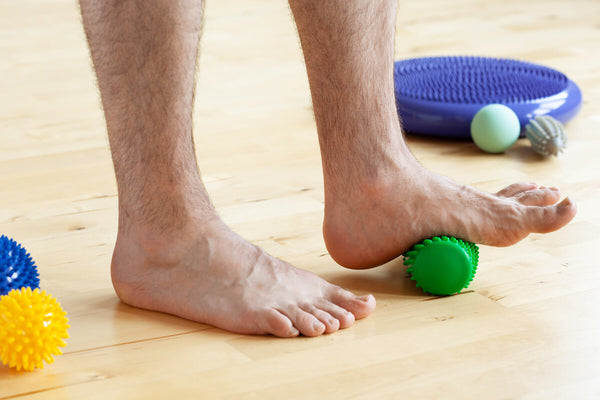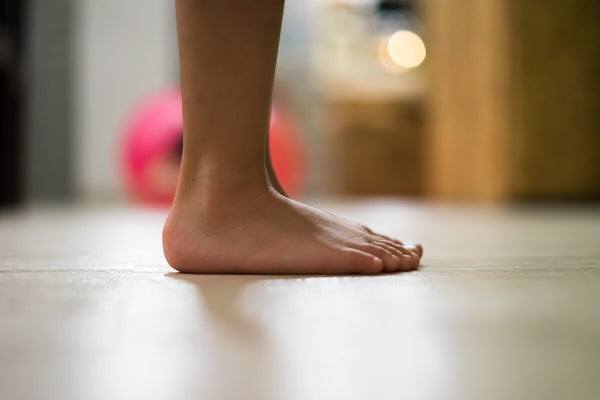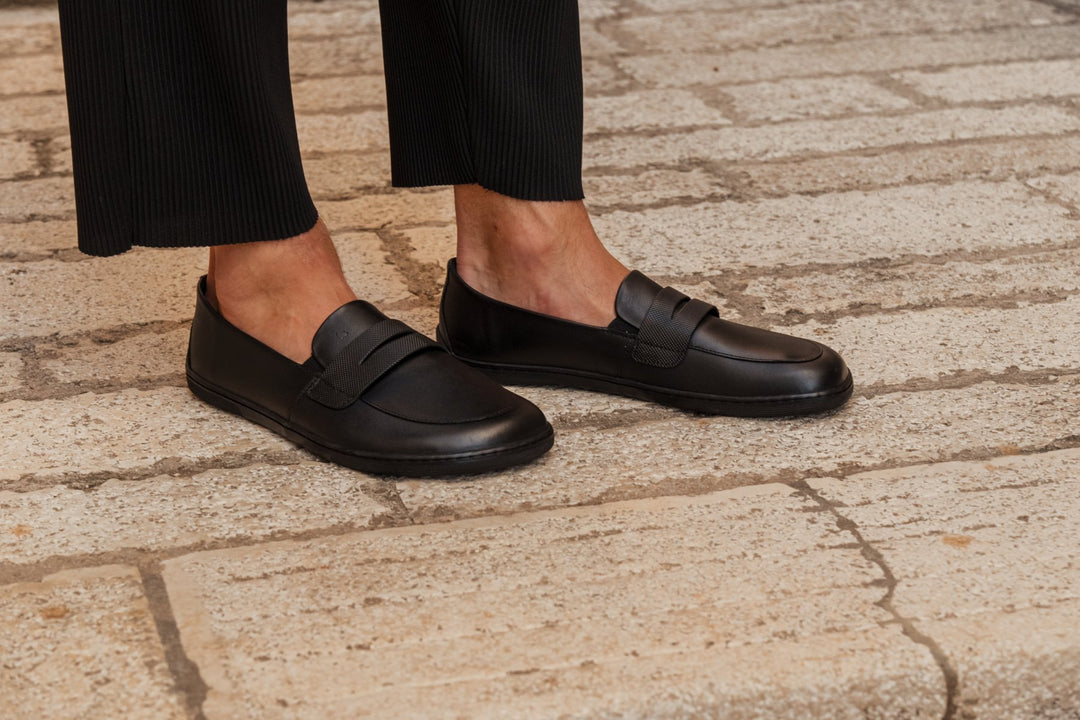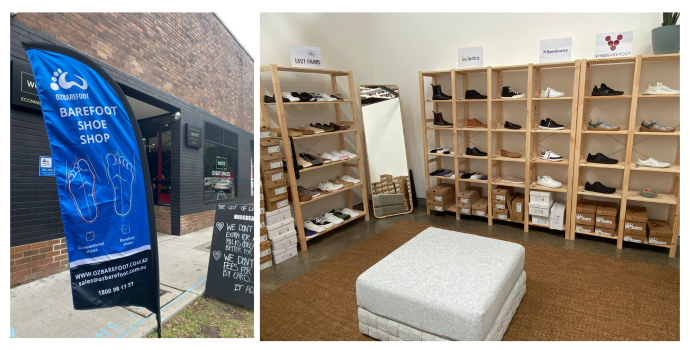Did you know flat feet are incredibly common? Most sources state that anywhere from 20-30% of people have flat feet (1). Although most people think having flat feet means they're doomed to wear restrictive orthotics for the rest of their lives, this isn't necessarily the case. People with flat feet can very often have great results from wearing minimalist shoes.
There's a lot of confusion around foot health in general and more fear surrounding the topic of flat feet than there needs to be. Flat feet are often just a variation of normal. Foot arches fall along a spectrum of flat to highly arched and there's a wide range of perfectly healthy feet within this spectrum.

The main cause for concern is when flat feet cause pain or are linked to other foot problems. This means barefoot shoes are perfectly fine for flat feet in most instances, but not always.
For educational purposes, we're going to delve into how barefoot shoes affect flat feet and what considerations are especially important.
It's always a good idea to consult with a foot care expert for your personal situation, particularly if you're suffering from any specific foot issues or health concerns.
Did you know that according to a survey done by Australia’s largest podiatry group in 2017, a shocking 48% of Australians said they experience heel, arch or foot pain at least once a week? (2)
What Are Flat Feet and What Causes Them?
The term flat feet refers specifically to the arch along the inner part of the foot known anatomically as the medial longitudinal arch. It extends from the heel to the base of the big toe knuckle. For people with flat feet, this portion of the foot may be completely flat on the ground, or it may be just slightly lifted.
This arch is made up of the tarsal and metatarsal bones, but it's supported by ligaments, tendons, and small muscles in the sole of the foot. This means that arch shape is partially determined genetically by the shape of the bones, but it can also be impacted by the condition of the supporting tissues.
All people begin life with flat feet. Babies and young children have very little lift in their arches until around the age of 6 when they begin to develop (3). For some children, arches never develop and they have flat feet their whole lives. Other people develop average arches but find their feet flattening later in life for various reasons. This is known as a "collapsed arch".
Many scenarios can lead to collapsed feet later in life, but some of the most common factors are weight gain, pregnancy, diabetes, acute injury, arthritis, wear and tear, and age (4).
Potential Reasons For Flat Feet
- Natural foot structure
- Weight gain
- Pregnancy
- Weak arches
- Tendon injury
- Broken bones
- Arthritis
- Diabetes
The reason someone has flat feet often determines if it needs addressing or not. Usually, people who've had flat feet since childhood due to genetics have perfectly well-functioning feet with no pain. They're likely to find barefoot shoes comfortable and have no issues with transitioning from regular shoes.

When flat feet occur because of illness or injury, it's more of a reason to proceed with caution. That being said, barefoot shoes can still potentially be a great option for improving foot health and overall well-being.
Did you know Usain Bolt, the fastest man in the world, has flat feet? He still managed to win 8 olympic medals and set the world record for 100m and 200m, clearly proving they're not an inherent limitation.
Are Barefoot Shoes Appropriate for Flat Feet?
The Potential Positive Effects
Although the most common prescription for flat feet is stiff orthotics, this approach statistically hasn't seen great success in improving outcomes, and in some circumstances, it can even do more harm than good (5).
That's because flat arches caused by weak tendons, ligaments or muscles need strengthening rather than just support. The lack of movement available in restrictive shoes can cause the tissues to relax and further degrade, making the problem worse.
Orthotics essentially function in the way a cast does. A cast on a broken leg protects the tissues while they're vulnerable and healing, but wearing it non-stop for years on end would no doubt lead to muscle wasting and other issues.
Barefoot shoes are the opposite of this. They allow feet to move naturally so the small muscles of the feet become stronger, and the connective tissue can respond to the stimulus of walking to become increasingly resilient.

This means barefoot shoes may have the potential to lift flat arches for some people, and they can lead to healthier feet less prone to pain and injuries (6).
Read more: Health benefits of wearing barefoot shoes
The Potential Negative Effects
Despite all the benefits barefoot shoes can have for flat feet, they're not ideal for everyone. Transitioning to barefoot shoes is taxing on the feet since it demands more mobility and effort than walking in regular shoes.
Even people with regular arches may have soreness while adjusting to barefoot shoes, and this is more likely to occur if the feet have particularly weak muscles, tendons and ligaments as is seen in many cases of flat feet.
People with flat feet should therefore take the transition to more minimalist style shoes extra cautiously and work up to longer periods wearing barefoot shoes gradually. This is especially true for anyone recovering from any type of foot injury.
People Who Should Avoid Barefoot Shoes
While some types of flat feet can be improved (or are perfectly healthy already), other kinds aren't as likely to see improvement.
Flat feet can sometimes be caused by unmanaged diabetes damaging the nerves in the feet. This will loosen the connective tissue and cause the feet to collapse so much so that bones can even fall out of alignment. This is called Charcot's foot, and barefoot shoes are not a recommended or safe type of shoe to wear with this condition.
Arthritis is another illness that can weaken the tendons and ligaments and change the shape of the feet. Since the foot strength is compromised, barefoot shoes are not an appropriate option for this particular version of flat feet either.
Conclusion
Chronic medical issues aside, barefoot shoes can often help improve both the function and health of flat feet. A healthy foot is one that can easily support the demands of day-to-day tasks without pain, and barefoot shoes are a straightforward path towards this goal.

If you think barefoot shoes could improve your quality of life, don't hesitate to consult with your doctor or foot health specialist about their potential benefits for you.
Article Sources
- Salvador Pita-Fernandez. (2017). Flat Foot in a Random Population and its Impact on Quality of Life and Functionality. Journal of Clinical and Diagnostic Research.
- My FootDr. (2017). The inaugural 2017 Healthy Foot Survey.
- Steffen Müller. (2012). Static and dynamic foot characteristics in children aged 1–13 years: A cross-sectional study. Gait & Posture.
- Hamed Malakoutikhah. (2022). The contribution of the ligaments in progressive collapsing foot deformity: A comprehensive computational study. Orthopaedic Research.
- Deirdre Whitford. (2007). A Randomized Controlled Trial of Two Types of In-Shoe Orthoses in Children with Flexible Excess Pronation of the Feet. Foot & Ankle International.
- Nicholas B. Holowka. (2018). Foot strength and stiffness are related to footwear use in a comparison of minimally- vs. conventionally-shod populations. Nature.











